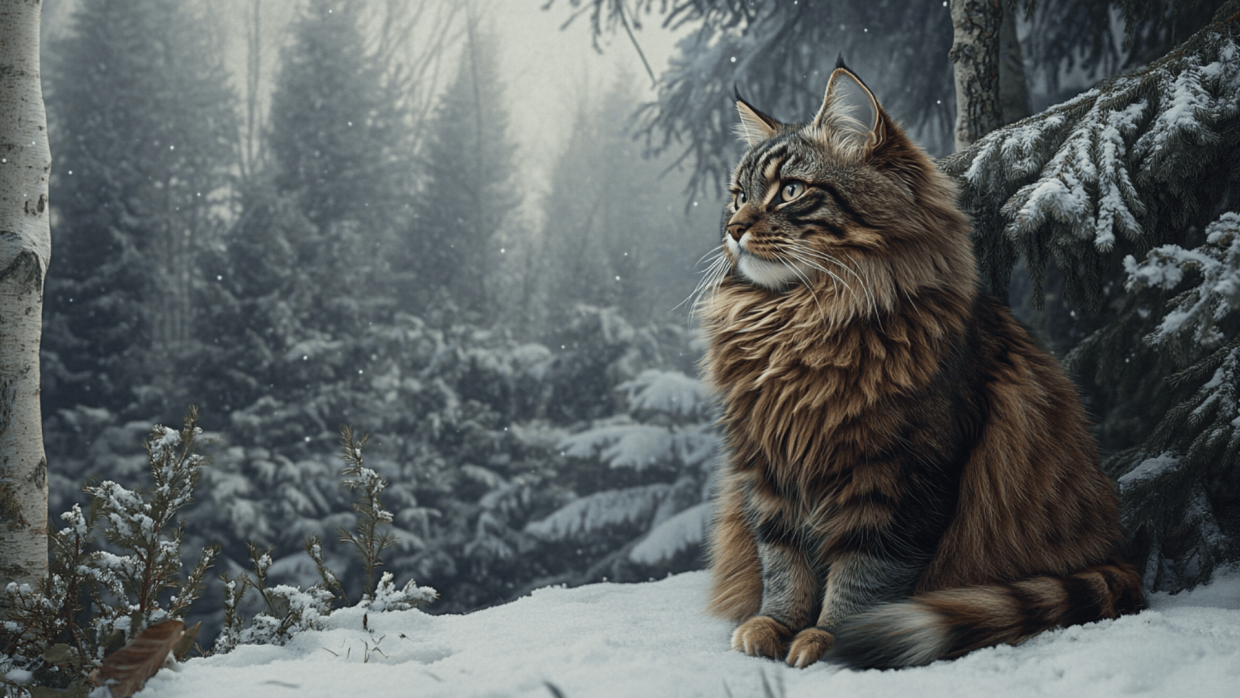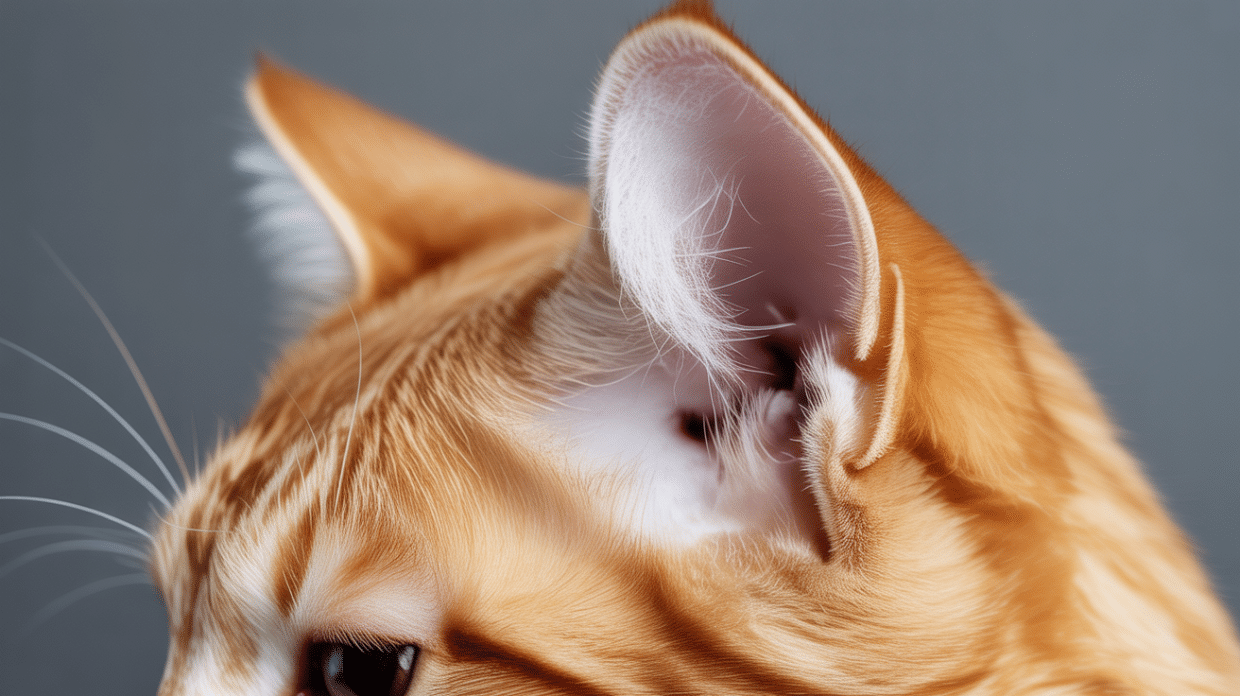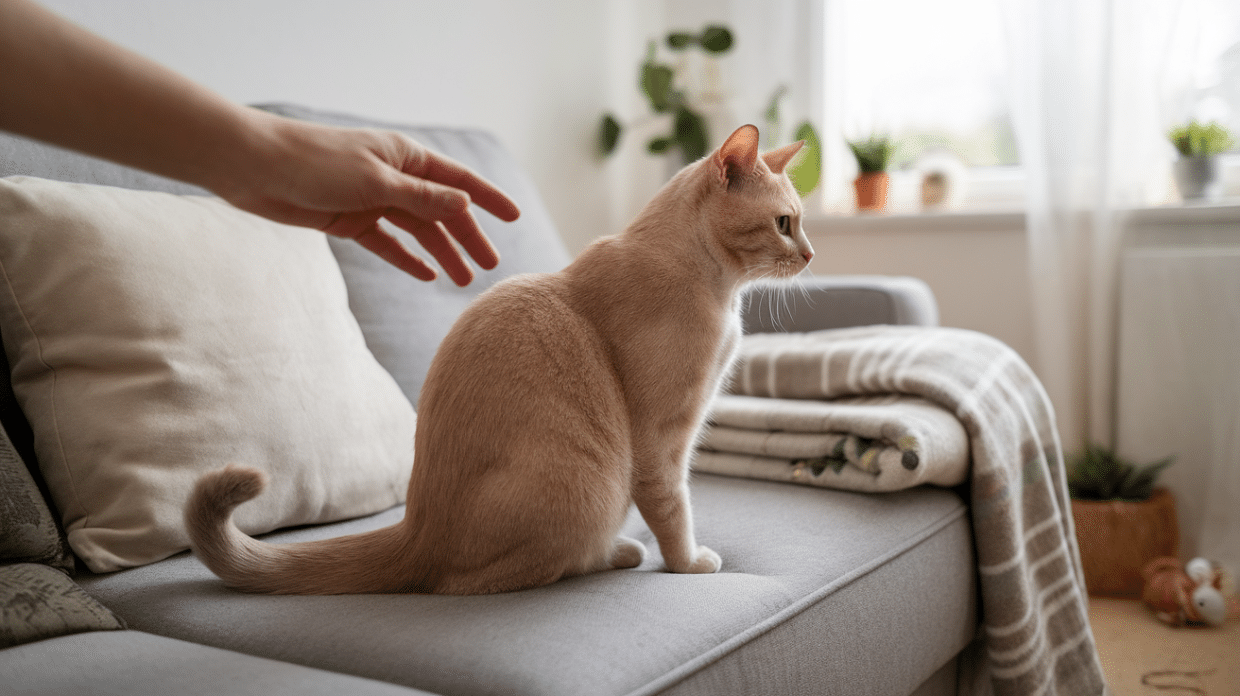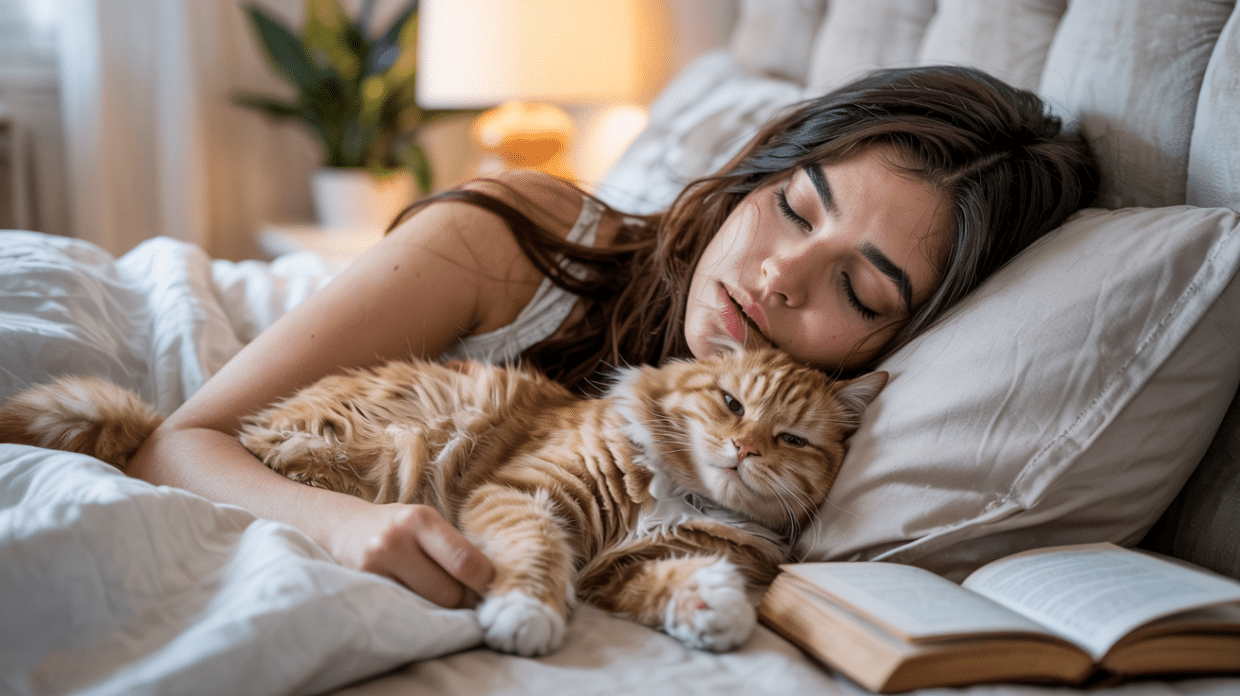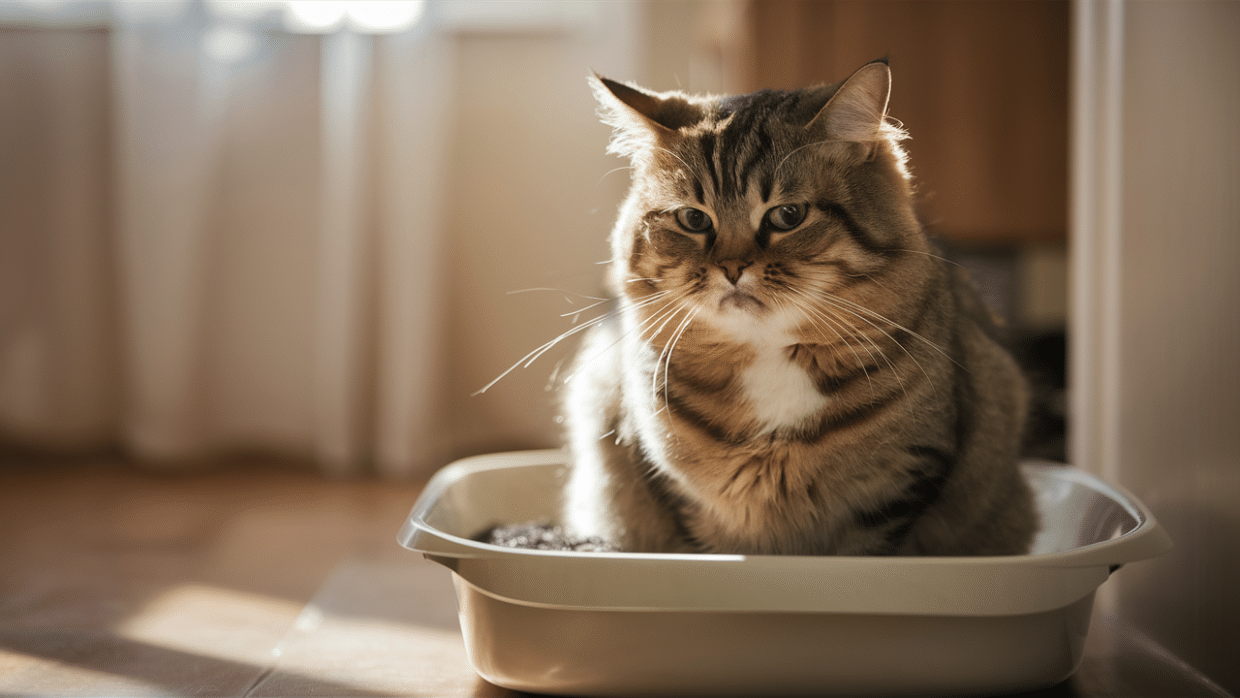Ever wondered if Maine Coons really came from Maine or if that’s just a fun name? Many people are curious about the origins of this large, fluffy cat breed.
The stories can get confusing, with some even involving Vikings and ship cats from Europe. This blog clears things up.
We’ll look at the most popular origin theories, compare the facts and myths, and explain why no one can say for sure where Maine Coons originated.
By the end, you’ll understand the history behind this unique breed and why it matters to cat lovers today.
So, what’s truth and what’s just a tall tale when it comes to the Maine Coon’s past? Let’s find out.
Quick Facts About Maine Coons
Before we dive into their origin stories, here are some quick facts to help you get to know the Maine Coon better.
- Origin: Maine, United States
- Known for: Large size, thick fur, and a friendly, easygoing personality
- Nicknames: Gentle giants, Coon Cat
- Fun fact: Maine Coon is the official state cat of Maine
These traits help explain why Maine Coons are such a beloved breed around the world.
The Most Accepted Theory – Native to Maine
Many believe that Maine Coons are one of the few cat breeds to develop naturally in North America. Their story likely begins with the cats brought over by early European settlers.
These working cats helped control rodents on farms and in homes. As they bred and adapted to Maine’s cold, snowy climate, they began to change. Thicker fur, bushy tails, and large paws helped them survive harsh winters.
Over time, these traits became part of the breed’s identity. Unlike other breeds that were created through selective breeding, Maine Coons may have evolved on their own.
This theory is backed by breeders, historians, and cat associations as the most likely origin of the Maine Coon.
Theory 1 – Descendants of European Ship Cats
One popular idea is that Maine Coons came from longhaired cats that lived on European ships. These cats were brought over by sailors who needed help keeping rodent populations under control.
When the ships arrived in New England, some cats were left behind or wandered off. Over time, they may have bred with local shorthaired cats.
The mix could have led to the Maine Coon’s thick fur, strong body, and smart, adaptable nature. While there’s no clear evidence, this theory makes sense to many historians and cat breeders.
Theory 2 – The Viking Connection
Another theory suggests that Maine Coons are linked to Viking explorers.
This idea comes from the fact that Maine Coons look a lot like the Norwegian Forest Cat—a breed known for being large, strong, and well-suited to cold climates.
Some believe that Viking ships brought these cats to North America long before settlers arrived. If that happened, the Viking cats could have stayed and mixed with native or early European cats in the region.
There’s no solid proof, but the similarities between the breeds have kept this theory alive for years.
Theory 3 – Marie Antoinette’s Turkish Angoras
A more romantic theory ties Maine Coons to Marie Antoinette, the Queen of France. During the French Revolution, she was planning an escape to America.
The story goes that a ship was loaded with her personal belongings and six long-haired Turkish Angora cats.
Although she never made the journey, the cats reportedly arrived in Maine and were released. Over time, they may have bred with local cats and helped shape the Maine Coon breed.
There’s no actual proof behind this story, but it’s one of the most well-known and often repeated legends.
Timeline of Maine Coon History
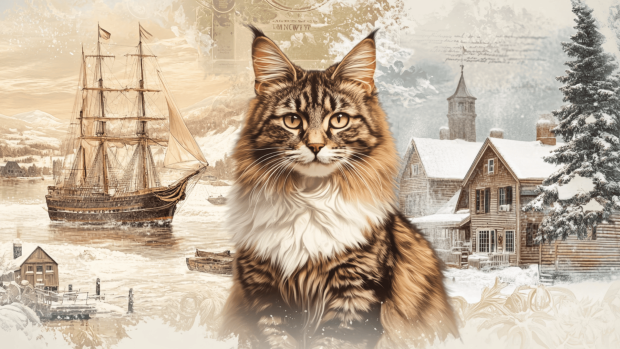
The history of the Maine Coon is filled with gaps, legends, and a few well-documented moments. Here’s how the breed’s story has unfolded over time.
Before the 1800s, cats with long fur and strong builds were already living in New England. These cats weren’t officially recognized or studied, but they were known for surviving the cold and helping control mice on farms and ships.
In the 1860s, Maine Coons started gaining attention at early cat shows in the United States. They were admired for their size, beauty, and gentle nature, quickly becoming a crowd favorite.
In 1985, the Maine Coon was named the official state cat of Maine, confirming its deep connection to the region’s identity and culture.
Today, thanks to modern DNA research and growing interest from breeders and pet owners, Maine Coons have become one of the most popular and recognizable cat breeds in the world.
Their history is still being explored, and their charm continues to win over fans everywhere.
Are Maine Coons Related to Other Breeds?
Maine Coons share some traits with other longhaired cat breeds, which has led to many questions about possible connections. While there are similarities, each breed also has key differences that set them apart.
The Norwegian Forest Cat looks a lot like the Maine Coon. Both are large, fluffy, and built for cold weather.
However, Norwegian Forest Cats have a more triangular face and a straighter nose, while Maine Coons tend to have squarer muzzles and larger paws.
The Turkish Angora is much slimmer and more delicate in build compared to the Maine Coon. It has long, silky fur but lacks the thick undercoat that helps Maine Coons stay warm in winter.
This breed is often mentioned in the Marie Antoinette legend, but there’s little real-world connection beyond that.
The Siberian cat, like the Maine Coon, is strong, thick-furred, and well-suited for snowy climates. Siberians also have a loving, playful personality.
While they come from Russia, their appearance and temperament are similar enough that some think they may share ancient roots.
Modern DNA studies show that Maine Coons are likely a mix of several European cat breeds, but they’ve developed their own genetic profile over time.
So while they may share some history or features with other breeds, they are a unique and natural breed in their own right.
Fun Facts and Folklore
Maine Coons have picked up a lot of interesting stories and traits over the years. Some are true, some are legend, but all of them add to the breed’s charm.
One fun fact is that many Maine Coons are born with polydactyl paws, meaning they have extra toes.
Sailors believed these cats were good luck and that their wide paws helped them balance better on ship decks. That’s part of why ship cats were so common in the first place.
The name “Coon Cat” comes from a long-standing myth that these cats were part raccoon because of their bushy tails and dark coloring. Of course, this isn’t possible—but the name stuck anyway.
The Maine Coon’s “gentle giant” nickname fits its size and sweet nature. Even in the early days, people noticed that these big cats were friendly, loyal, and easy to live with, making them a favorite in homes and farms alike.
What Makes Maine Coons Unique Today
Maine Coons still carry many traits that helped their ancestors survive. Their thick fur, large paws, and strong bodies are all part of what made them great in Maine’s cold, snowy climate.
Today, they’re one of the most popular cat breeds in the world. People love them for their size, playful behavior, and social personalities especially since many wonder why cats are so lazy compared to active breeds like the Maine Coon.
They often act more like dogs than cats, following people around, playing fetch, and even learning tricks.
Even with their growing fame, Maine Coons haven’t lost their roots. They’re still the same hardy, lovable cats that earned their place in Maine’s history and people’s hearts around the world.
Conclusion
Now you know the answer to where did Maine Coons originate, or at least the best theories we have.
From snowy farms in Maine to tales of Viking ships and French royalty, their history is full of mystery and charm.
Next time you see a Maine Coon, you might look at it a little differently. These cats carry a lot of history in their big paws and fluffy tails.
While no one can say for certain where they originated, their story reminds us of how nature and humans have shaped the animals we love today.
Curious about other cat breeds or pet facts? Check out more of our blog posts to keep learning.

